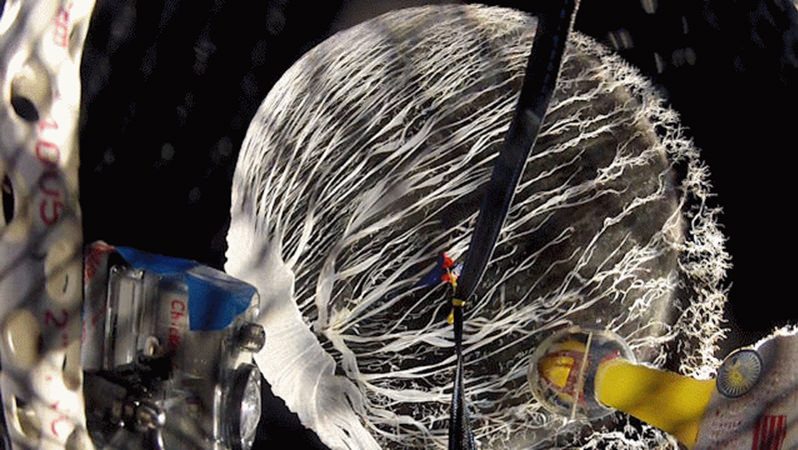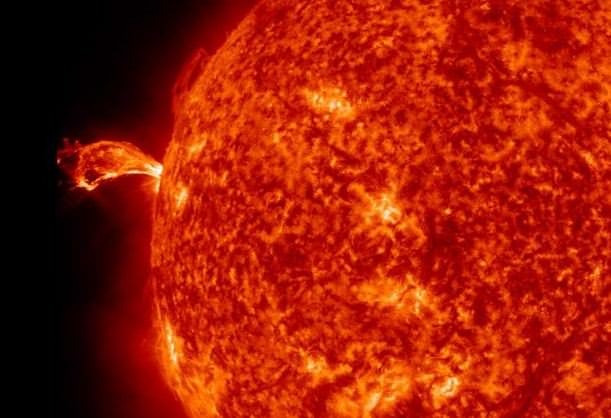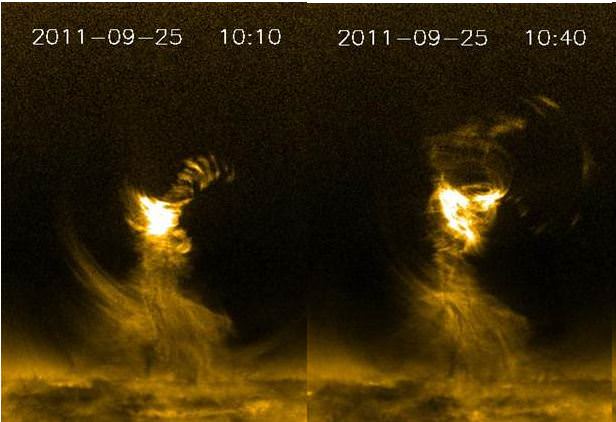[/caption]
In my travels, I’ve had the pleasure of regularly meeting up with Camilla the Rubber Chicken, the social media maven and mascot for NASA’s Solar Dynamics Observatory. But lately I’ve been seeing here virtually everywhere — on television, splashed across all sorts of websites, and even in my local newspaper. What Camilla does is try to capture the imagination of students and get them interested in space and science. With her latest adventures she’s done just that, and now captured the attention of people all around the world, too.
What did she do? She flew to the stratosphere — about 36,000 meters (120,000 ft) up — on a helium balloon right into the throes of one of the most intense solar radiation storms since 2003.
“I am still glowing,” Camilla joked.
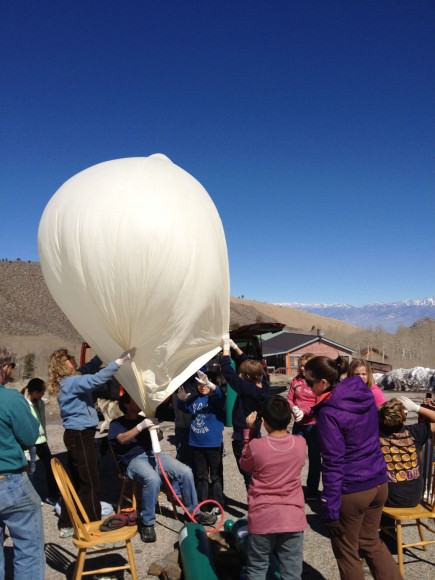
Students from Bishop Union High School’s Earth to Sky group spearheaded the flights, as Camilla actually flew twice — once on March 3 before the radiation storm and again on March 10 while the storm was in full swing. This would give the students a basis for comparison of the radiation environment.
On board with Camilla was a payload of four cameras, a cryogenic thermometer two GPS trackers, radiation detectors, Seven insects and two-dozen sunflower seeds (fittingly, the variety known as “Sunspot” — Helianthus annuus) all inside a modified department store lunchbox.
“We equipped Camilla with sensors to measure the radiation,” says Sam Johnson, 16, of Bishop Union High School’s Earth to Sky student group. “At the apex of our flight, the payload was above 99 percent of Earth’s atmosphere.”
Camilla made it back in one piece, but unfortunately, the insects died.
“This story is really about STEM (science, technology, engineering and math) and about these kids from Bishop, California who have worked really hard in developing the mission, planning it, and then executing it,” Camilla told Universe Today. “They had to overcome set-backs, review their processes, come up with better solutions and implement them. For them it was a great hands-on learning experience and they are and can be proud of their accomplishments.”
NASA knows that these kinds of programs, where kids can get involved in hands-on research, are very important for introducing and keeping students interested in STEM subjects, important areas of study for future NASA scientists and engineers.
“As you know, I not only want to educate about our Sun and space weather, but I want to inspire and show kids (and adults) how much fun science and engineering really is,” Camilla said via email. “Team SDO’s goal has always been to encourage more girls into STEM careers and seeing that this team had several girls on the team was just the most rewarding.”
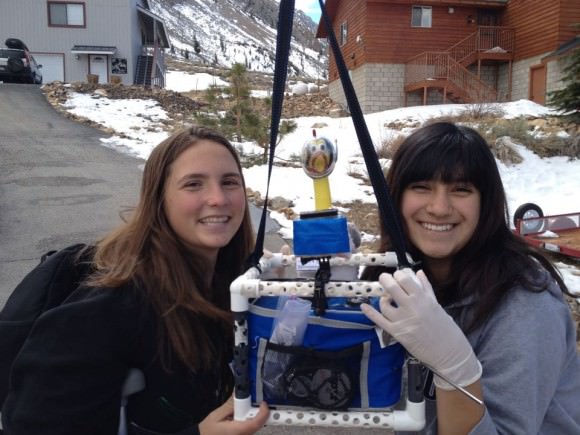
The video of the balloon popping and part of Camilla’s flight:
During the two-and-a-half-hour flights, Camilla spent approximately 90 minutes in the stratosphere where temperatures ( -40 to -60 C, -40 to -76 F) and air pressures (1 percent sea level) are akin to those on the planet Mars. The balloon popped, as planned, at an altitude of about 40 km (25 miles) and Camilla parachuted safely back to Earth. The entire payload was recovered intact from a landing site in the Inyo Mountains.
The fifth grade students who assisted with the flight have planted the sunflower seeds to see if radiated seeds produce flowers any different from seeds that stayed behind on Earth. They also pinned the corpses of the insects to a black “Foamboard of Death,” a rare collection of bugs that have been to the edge of space.
Meanwhile, Camilla’s radiation badges have been sent to a commercial laboratory for analysis.
The students say they are looking forward to the data and perhaps sending Camilla back for more.
“I truly believe that text books will always be around,” Camilla said, “but real-life hands-on projects like these are wonderful, and will become more popular.”
Here’s a video of an X-class flare from sunspot AR1429, which unleashed more than 50 solar flares during the first two weeks of March:
Read more about Camilla’s adventures, or our previous article, How a Rubber Chicken is Spreading the Word About NASA’s Space Missions and Science.

